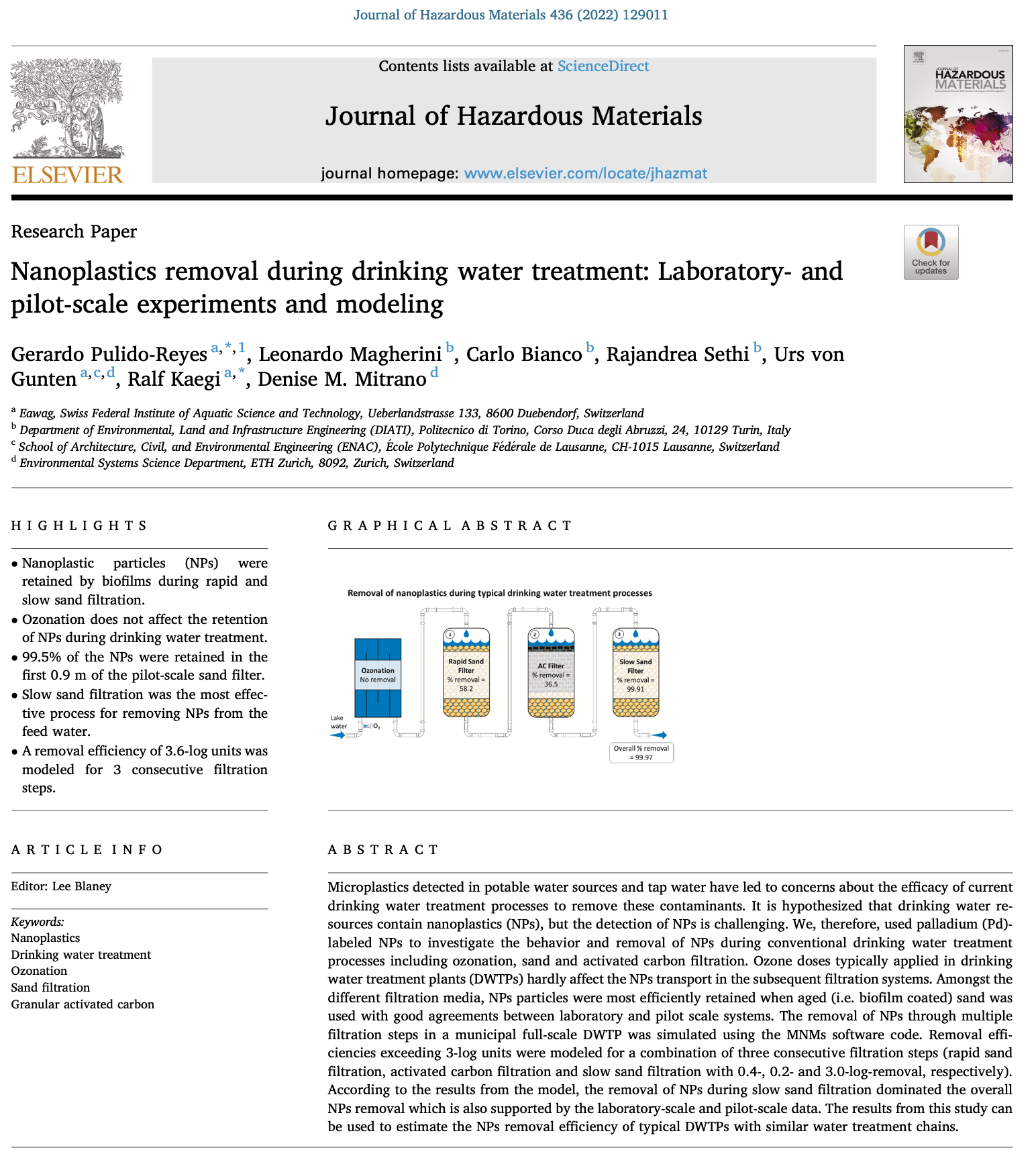New publication: Nanoplastics Removal During Drinking Water Treatment: Laboratory- and Pilot-scale Experiments and Modeling
How effective are drinking water treatment plants at removing nanoplastics from surface waters? Check out our latest study to learn more!

Gerardo Pulido-Reyes, Leondardo Magherini, Carlo Bianco, Rajadrea Sethi, Urs von Gunten, Ralf Kaegi, Denise M. Mitrano. Nanoplastics removal during drinking water treatment: Laboratory- and pilot-scale experiments and modeling. Journal of Hazardous Materials. 2022. 436, 129011. external page See full text here
Highlights
•Nanoplastic particles (NPs) were retained by biofilms during rapid and slow sand filtration.
•Ozonation does not affect the retention of NPs during drinking water treatment.
•99.5% of the NPs were retained in the first 0.9 m of the pilot-scale sand filter.
•Slow sand filtration was the most effective process for removing NPs from the feed water.
•A removal efficiency of 3.6-log units was modeled for 3 consecutive filtration steps.
Abstract
Microplastics detected in potable water sources and tap water have led to concerns about the efficacy of current drinking water treatment processes to remove these contaminants. It is hypothesized that drinking water resources contain nanoplastics (NPs), but the detection of NPs is challenging. We, therefore, used palladium (Pd)-labeled NPs to investigate the behavior and removal of NPs during conventional drinking water treatment processes including ozonation, sand and activated carbon filtration. Ozone doses typically applied in drinking water treatment plants (DWTPs) hardly affect the NPs transport in the subsequent filtration systems. Amongst the different filtration media, NPs particles were most efficiently retained when aged (i.e. biofilm coated) sand was used with good agreements between laboratory and pilot scale systems. The removal of NPs through multiple filtration steps in a municipal full-scale DWTP was simulated using the MNMs software code. Removal efficiencies exceeding 3-log units were modeled for a combination of three consecutive filtration steps (rapid sand filtration, activated carbon filtration and slow sand filtration with 0.4-, 0.2- and 3.0-log-removal, respectively). According to the results from the model, the removal of NPs during slow sand filtration dominated the overall NPs removal which is also supported by the laboratory-scale and pilot-scale data. The results from this study can be used to estimate the NPs removal efficiency of typical DWTPs with similar water treatment chains.
